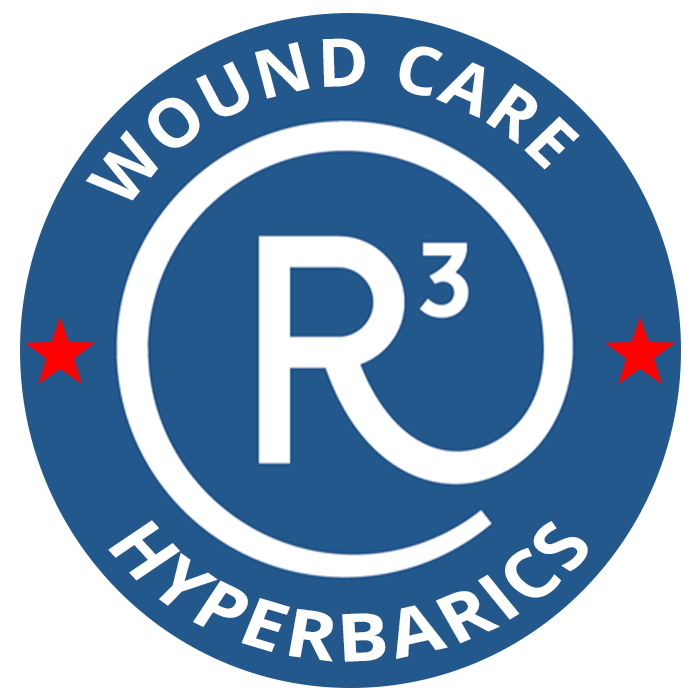Radiation therapy is a powerful treatment that slows or kills the growth of cancer cells. It’s recommended for half of all cancer patients, many of whom owe their lives to radiation treatment.
However, such a potent treatment doesn’t harm cancer cells in isolation; it also injures healthy cells and tissues as a result.
If you’ve endured radiation therapy in the past, you know exactly how intense and invasive radiation therapy feels, not just during treatment but long after as well. Even if your radiation treatment wrapped up more than six months ago, you could still be coping with old side effects and noticing new complications arise.
Perhaps you’re in a constant state of pain from burns and tissue damage, or maybe your bladder control is diminishing. The complications of radiation therapy are frustrating, painful, and often embarrassing, but thanks to hyperbaric oxygen therapy (HBOT), they don’t need to define your life and your health!
What Is Delayed Radiation Injury?
Even as it kills cancer cells, radiation therapy causes acute and chronic injuries across your body. Acute injuries occur during treatment itself, like burns, skin changes, and hair loss. These acute injuries may eventually heal and disappear, but the effects of radiation continue to affect your body indefinitely. Most patients eventually develop delayed radiation injuries, also known as chronic injuries, months or years after their treatments conclude.
These delayed radiation injuries are often invisible. You might look normal from the outside, but inside you’re coping with urinary issues, cracked teeth, broken bones, and more. Without proper treatment, chronic radiation symptoms don’t get better with time — they can actually get worse.
The Most Common Types of Radiation Injuries
Everything from your age at the time of radiation to the type of cancer treated can influence your delayed radiation injuries, but certain wounds are most common for all patients.
Weak and Broken Bones
Radiation is so potent that it can weaken the bones and cause osteoporosis and osteonecrosis. Since bones are living and growing organisms, radiation harms their active cells and stunts their strength. The ribs in your chest or bones in your leg may become far more vulnerable to fractures and breaks.
Bowel and Bladder Dysfunction
Just like radiation harms cells in your bones, it also affects the cells in your bowel and bladder. Blood vessels become fragile and bleed easily. Swelling can also cause the urethra to narrow.
As a result, you might experience blood in your urine, reduced bladder control, sexual dysfunction, and interruptions to your daily routine after radiation treatment.
Burns
The concentrated exposure of X-rays during radiation therapy often causes painful burns across the skin. As X-rays pass through the skin, they produce dangerous free radicals that damage DNA, injure skin tissue, and trigger inflammation. This side effect is so common that about 85% of radiation patients experience moderate-to-severe burns during and after treatment
Radiation burns occur soon after treatment, but due to the body’s reduced capacity to heal, skin damage can last for months or years without proper intervention. This is especially true since radiation treatments are scheduled in quick succession, limiting the time your skin has to heal and repair between doses.
Burning takes many different forms after radiation. Many of these symptoms of radiation burns become aggravated over time:
- Redness
- Itching
- Peeling and flaking
- Soreness and swelling
- Moistness and blistering
- Pigmentation changes
Unfortunately, damage to the skin doesn’t stop at burns. If exposed skin peels away faster than it can grow back, radiation ulcers develop. These wounds feel like burns, but they are non-healing ulcers that increase your risk of infection.
How Can Hyperbaric Oxygen Therapy Treat Your Radiation Injury?
Hyperbaric oxygen therapy (HBOT) makes it possible to minimize and even reverse your radiation symptoms. It uses 100% oxygen at pressures above regular atmospheric pressure to stream oxygen through your bloodstream.
Radiation triggers vascular changes that deprive the cells in your body of the essential oxygen they need to function and thrive. This oxygen deprivation plays a role in the development of delayed radiation injuries, which means that HBOT can reduce and reverse these health problems.
HBOT delivers the concentrated oxygen needed for wound healing. Pressurized oxygen dissolves directly into all of the body’s fluids so that it can thoroughly permeate the areas lacking oxygen after radiation therapy.
This essential benefit of hyperbaric wound care stimulates and supports the body’s own healing process. When white blood cells receive enough oxygen, they can effectively kill bacteria, reduce swelling, and allow the rapid reproduction of new blood vessels. HBOT even enables cells to build new connective tissue and improve organ function.
Alternatives to HBOT for Post-Op Radiation
Wound healing after radiation therapy doesn’t have many alternatives beyond HBOT. You can try to relieve your symptoms using topical creams, NSAIDs, or surgery, but hyperbaric oxygen therapy is the only treatment available to stimulate the internal healing needed to overcome the effects of radiation.
Many past cancer patients wonder if they should use HBOT to address their symptoms, and they turn to traditional Band-Aid solutions first due to their fear of the unknown. This only aggravates their pain and gives their conditions time to worsen.
If you’re ready to explore the benefits of HBOT for radiation wound care, radiation ulcer treatment, or any other radiation injury, simply call R3 Wound Care and Hyperbarics to schedule an appointment in your local DFW, Texas area.
R3 is committed to fulfilling the need for high-quality outpatient wound care administered in a comfortable, comforting environment. Our advanced HBOT technology and highly skilled professionals deliver maximized results that improve your health and quality of life.
Visit R3 to learn more about our HBOT treatments designed to address your unique medical needs and help you enjoy your life without the hindrance of chronic radiation injuries.
Connect with us to find out exactly why HBOT is the treatment you’ve been missing all this time.
